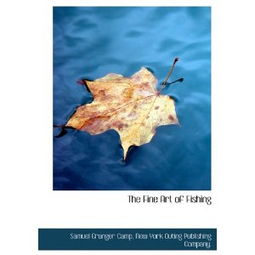Content:
Introduction: Fishing is an ancient activity that has been cherished by many for centuries. It offers a sense of relaxation, adventure, and a connection with nature. Among the various fishing techniques, line fishing is one of the most popular and widely practiced methods. Whether you are a beginner or an experienced angler, learning how to use line fishing effectively can greatly enhance your fishing experience. In this article, we will provide you with a comprehensive video guide on how to use line fishing techniques, covering everything from choosing the right equipment to mastering the art of casting and reeling in your catch.
Choosing the Right Equipment: The first step in line fishing is selecting the appropriate equipment. Here are some essential items you will need:
- Fishing rod: Choose a rod that matches the type of fish you are targeting and the distance you plan to cast.
- Fishing reel: Select a reel that is compatible with your rod and offers the desired level of line capacity and drag.
- Line: Use a monofilament or fluorocarbon line depending on the fish species and water conditions.
- Hooks: Choose hooks that are appropriate for the size and type of fish you are targeting.
- Lures or bait: Select lures or bait that mimic the natural prey of the fish you are trying to catch.
Setting Up Your Line: Once you have your equipment ready, it's time to set up your line. Follow these steps:

- Attach the lure or bait to the hook using a suitable knot, such as the improved clinch knot or the palomar knot.
- Thread the line through the rod guides, ensuring it is smooth and taut.
- Tie the line to the reel using a knot like the albright knot or the uni knot.
- Adjust the drag on the reel to prevent the line from snapping under heavy pressure.
Casting Techniques: Casting is a crucial skill in line fishing. Here are some common casting techniques:
- Overhand cast: Hold the rod with both hands, extend your arm, and swing the rod back and forth to propel the line forward.
- Roll cast: Use a shorter, more controlled casting motion to cover shorter distances or cast into tight spots.
- Pitch cast: Aim for accuracy and precision by using a quick, short casting motion.
Reeling in Your Catch: Once you have hooked a fish, it's time to reel it in. Here are some tips for successful reeling:
- Keep your rod tip down and maintain a steady pressure on the line to prevent the fish from breaking free.
- Adjust your drag as needed to maintain the right amount of tension on the line.
- Be patient and allow the fish to tire itself out before bringing it to the boat or shore.
Safety Precautions: Safety should always be a priority when fishing. Here are some safety precautions to keep in mind:
- Always wear a life jacket when fishing from a boat.
- Be aware of your surroundings and other anglers to avoid accidents.
- Keep sharp hooks and fishing equipment out of reach of children.
- Dispose of trash properly and respect the environment.
Conclusion: Line fishing is a rewarding and enjoyable activity that can be mastered with practice and knowledge. By following the comprehensive video guide provided in this article, you will be well-equipped to tackle the art of line fishing and catch a variety of fish species. Remember to always prioritize safety and respect the environment while enjoying your fishing adventures. Happy fishing!












